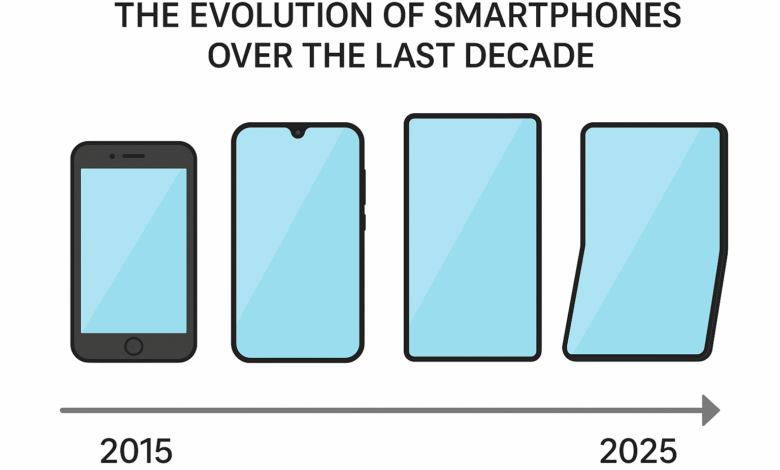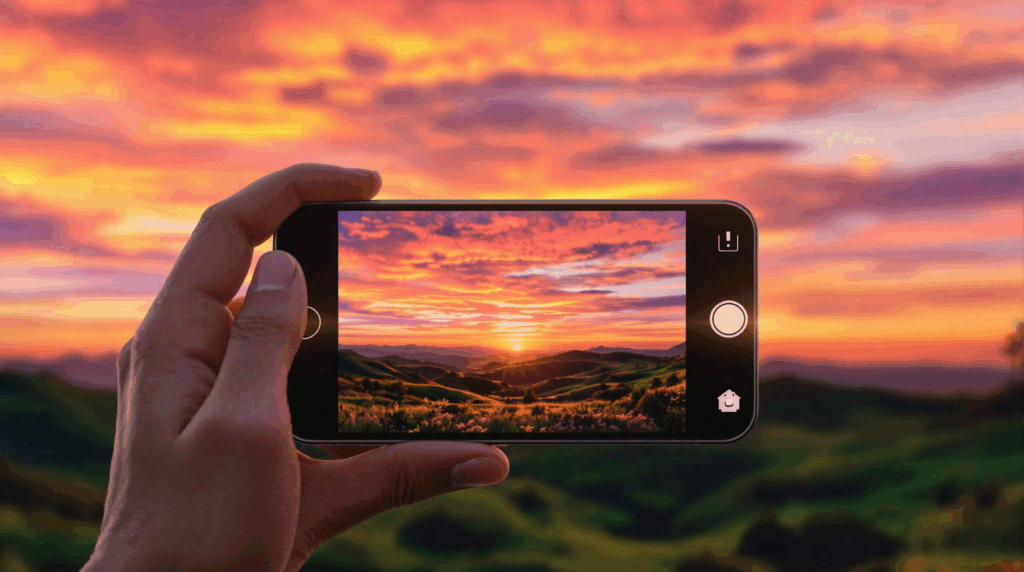The Evolution of Smartphones over the Last Decade

The past decade has witnessed a remarkable transformation in smartphone technology. From a simple communication tool, the smartphone has become a powerful device that rules the way we live, work, and communicate. Since 2015 to 2025, smartphones have experienced frenzied innovations in design, performance, and intelligence to meet the growing needs of a digital age.
Evolution in Design and Display
The most noticeable evolution in the past decade lies in the design. Smartphones used to have thick bezels, single cameras, and small screens a few years ago, in the mid-2010s. They now have seamless, bezel-less designs, foldable displays, and feather-light materials. The shift from LCD to OLED and now AMOLED and micro-LED displays has drastically improved color accuracy, brightness, and power efficiency.
On top of that, smartphone manufacturers focused on aesthetics and durability. Gorilla Glass, metal frames, and ceramic backs are the new standards, combining beauty with toughness. Foldable phones, once the realm of the future, are now standard, showing how aesthetics and innovation could be combined.

Performance and Hardware Evolution
Hardware has also kept pace with design. Smartphone processors today are as powerful as those on laptops. Apple’s A-series processors, Qualcomm’s Snapdragon, and Google’s Tensor processors have all experienced exponential performance improvement. The outcome is more seamless multitasking, gaming, and AI-driven features like real-time translation and image enhancement.
Battery life has also been enhanced over the years. Wireless charging, quick-charging, and high-density lithium-polymer batteries have enabled smartphones to be more convenient and efficient to use. Storage capacities, which were previously limited to 16GB or 32GB, now reach up to 1TB, allowing for more space for users to keep photos, videos, and apps without needing any external support.

The Rise of Mobile Photography
Another key improvement has been in mobile photography. A decade back, there was a standard single rear camera. Today, there are several lenses — wide, ultra-wide, telephoto, and macro — supported by AI for improved image quality. Computational photography allows users to capture professional-grade images without professional hardware.
This expansion has also affected industries such as content creation and social media. Social media platforms such as Instagram, TikTok, and YouTube are built on mobile-first content, and smartphones have now become the first device of choice for digital storytelling.
Software, AI, and Connectivity
Phone software has also improved similarly. Operating systems like Android and iOS use artificial intelligence for personalizing the user’s experience. Artificial intelligence assists with anticipating the user’s behavior, managing battery life, and optimizing security options such as facial recognition and voice commands.
5G revolutionized connectivity. Speedier internet has changed the way humans connect, work, and watch content online. Integration with the cloud offers seamless access to data on devices, blending physical and virtual environments.
Impact on Society and Lifestyle
Smartphones are no longer a privilege but a necessity in modern living. Smartphones are used as communication tools, navigation tools, learning tools, entertainment, and even health monitoring tools. But with such reliance comes the problem of digital wellness, screen addiction, and data protection. With new technology, more and more there is the need to reconcile convenience with appropriate usage.

Concluding Remarks
The past decade of smartphone innovation has been nothing less than a revolution. With enhanced processors and improved cameras, smart software and bendable screens, smartphones have become inseparable companions in our lives. In coming up to 2025 and the next decade, the future can only bring more innovations. Maybe wiser, greener, and more people-sensing phones that continue to revolutionize the way we live life.